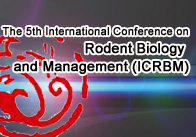Abstract: The aphid alarm pheromone (E)-β-farnesene (EβF) is an efficient signal that warns aphids of attack by natural enemies. In this field study, eight open-top chambers (OTCs) located in Beijing, China (40° 11'N, 116° 24'E) with spring wheat Triticum aestivum were used to examine the response of the grain aphid Sitobion avenae to CO2 (ambient vs. double ambient) and EβF (applied zero, two, or five times each day). We experimentally tested the hypotheses that, depending on frequency of EβF release, elevated CO2 reduces the response (in terms of population density) of S. avenae to EβF, and that lower activity of acetylcholinesterase (AChE) in S. avenae may be involved in its reduced sensitivity to EβF under elevated CO2. Numbers of S. avenae declined with increased frequency of EβF application under ambient CO2 but were unaffected by EβF application under elevated CO2. Additionally, the mean relative growth rate (MRGR) and the dry material and amino acid content of S. avenae increased with elevated CO2 but declined when with EβF application. Activities of superoxide dismutase and catalase were higher in S. avenae under elevated vs. ambient CO2. Under elevated CO2, however, AChE activity remained low when S. avenae was exposed to the lower EβF frequency, while the highest AChE activity occurred in aphids exposed to the higher EβF frequency. These results indicate that aphids become insensitive to EβF under elevated CO2, perhaps because of decreased AChE activity.
Sun Y, Su J, Ge F. 2010. Elevated CO2 reduces the response of Sitobion avenae (Homoptera: Aphididae) to alarm pheromone. Agriculture Ecosystems & Environment. 135(1-2): 140-147.
